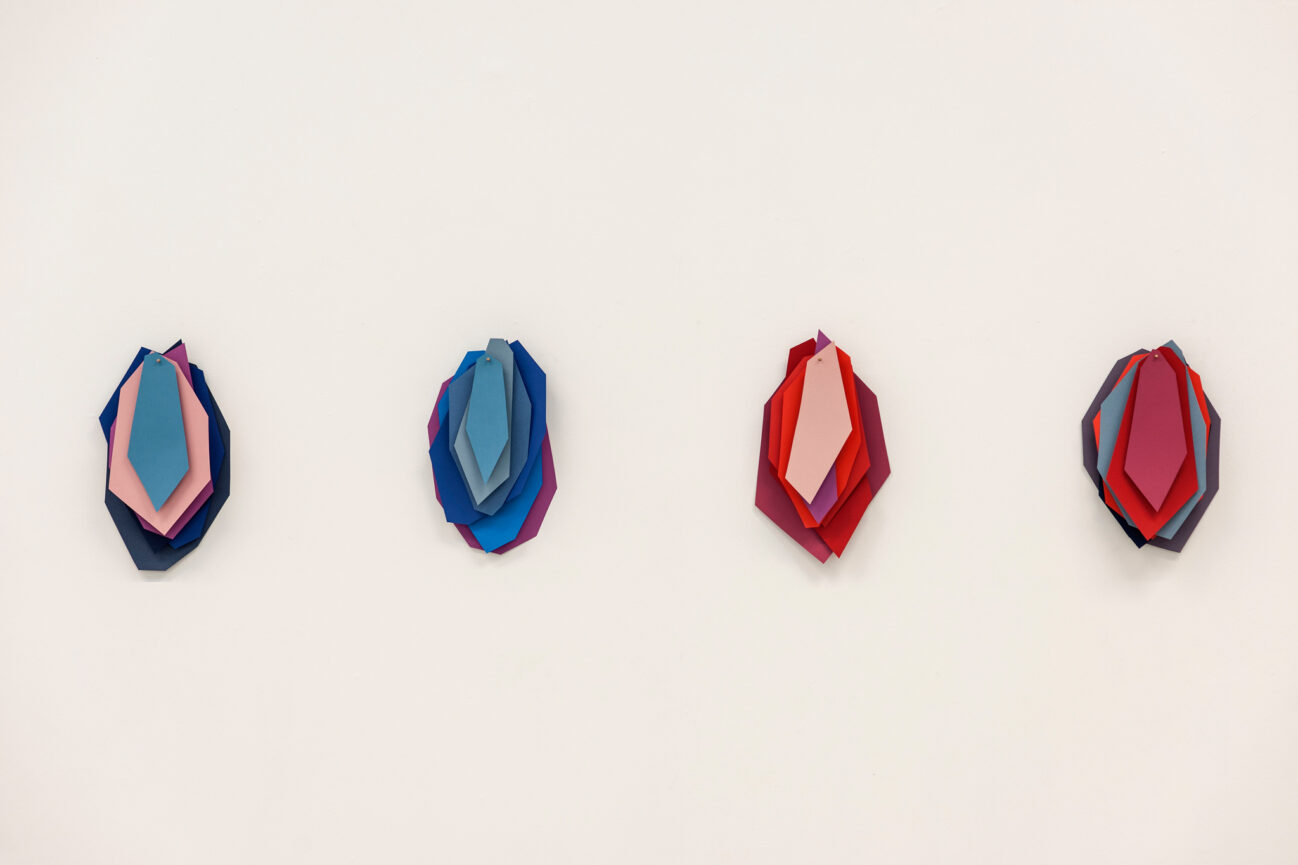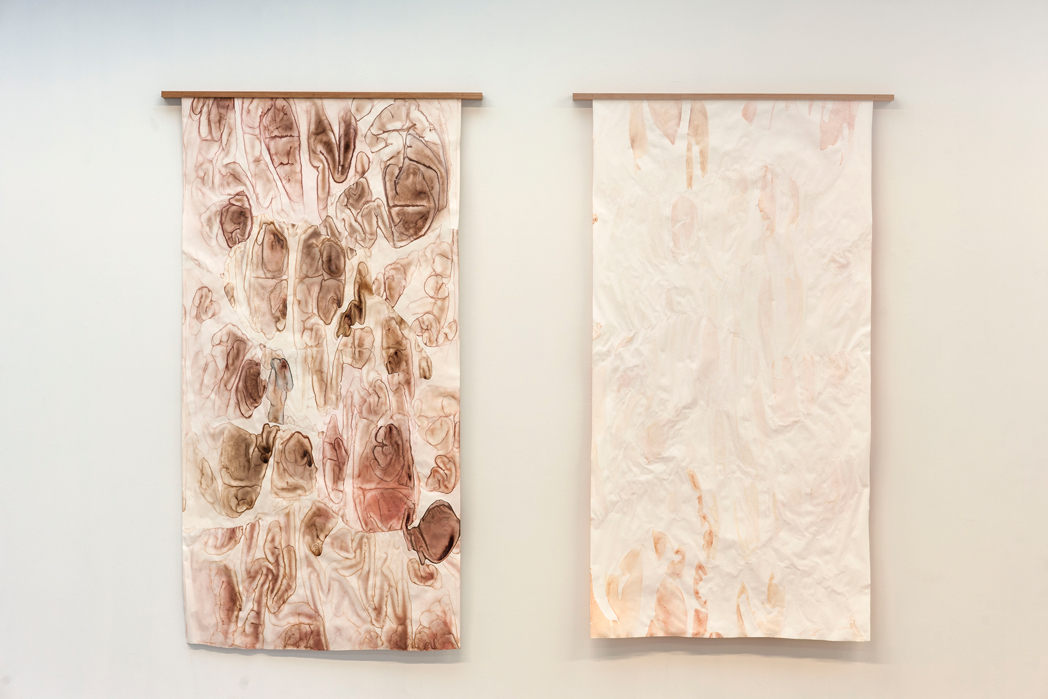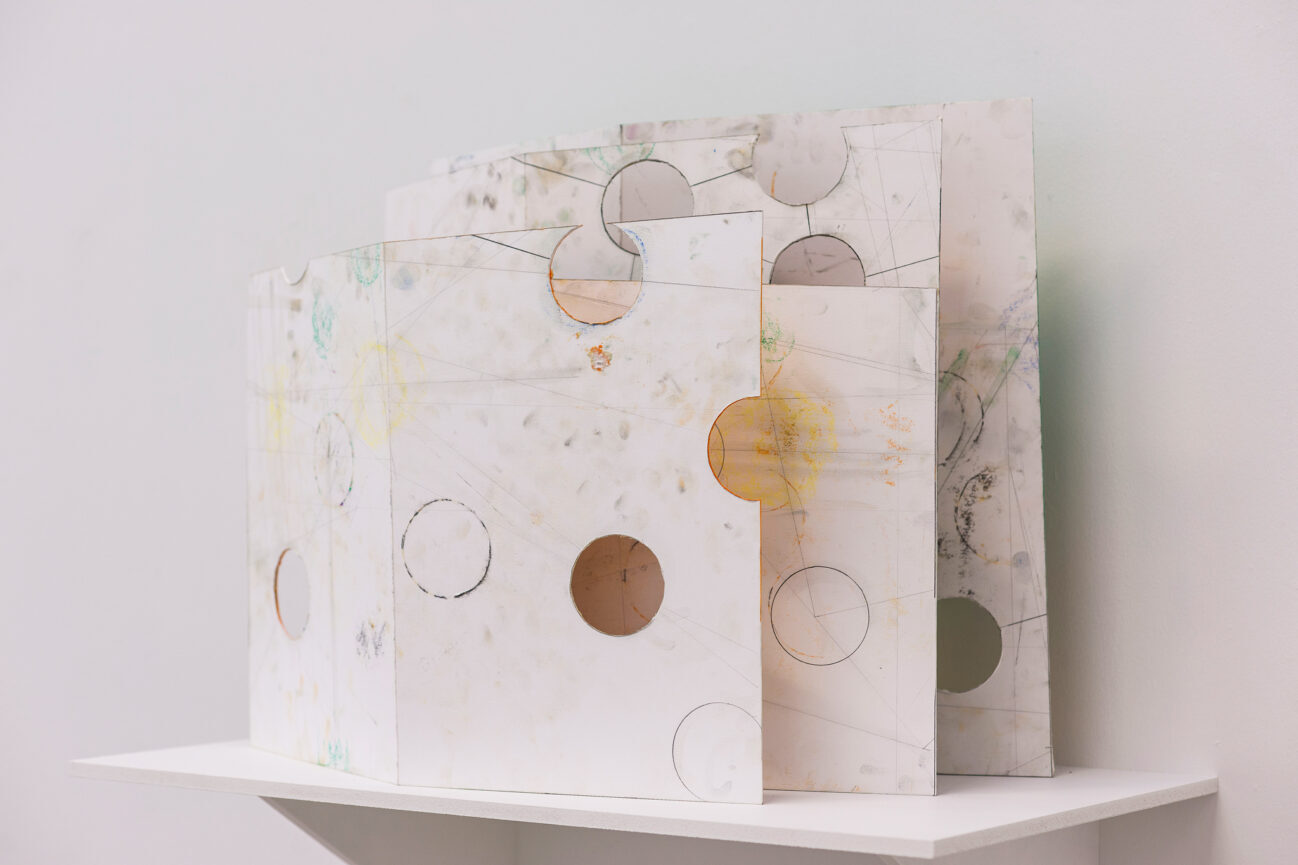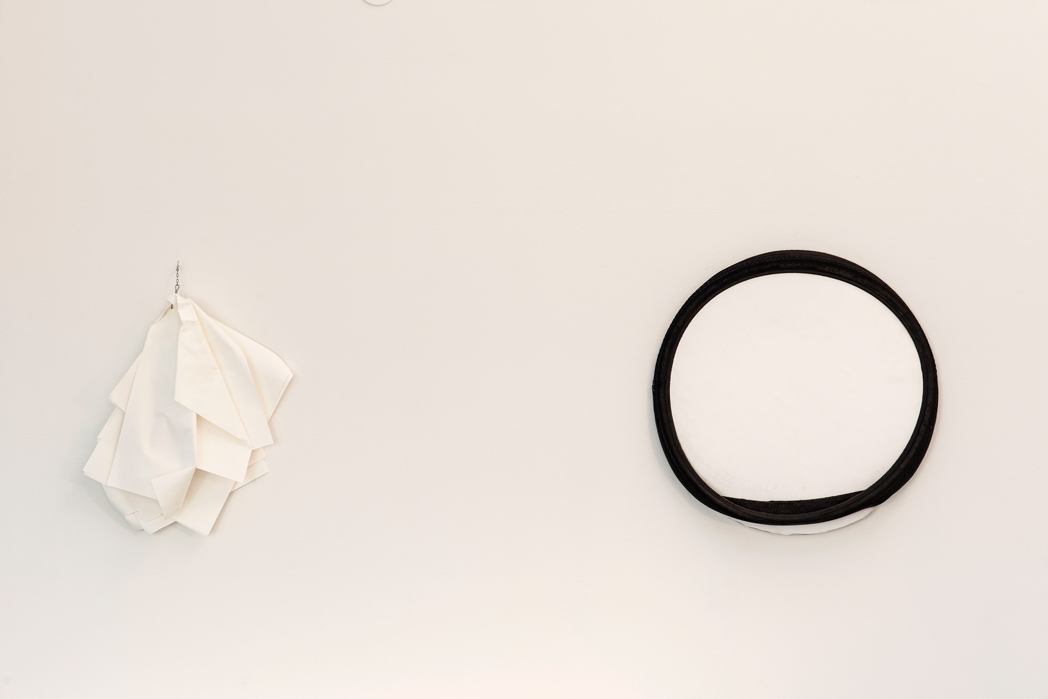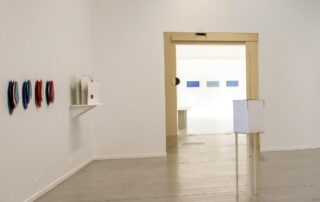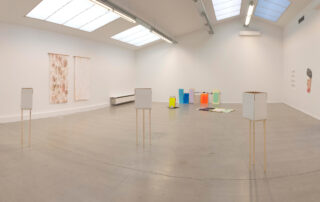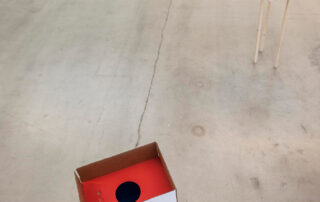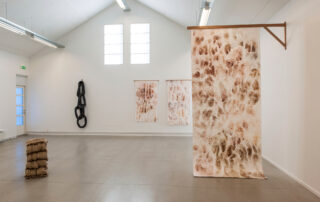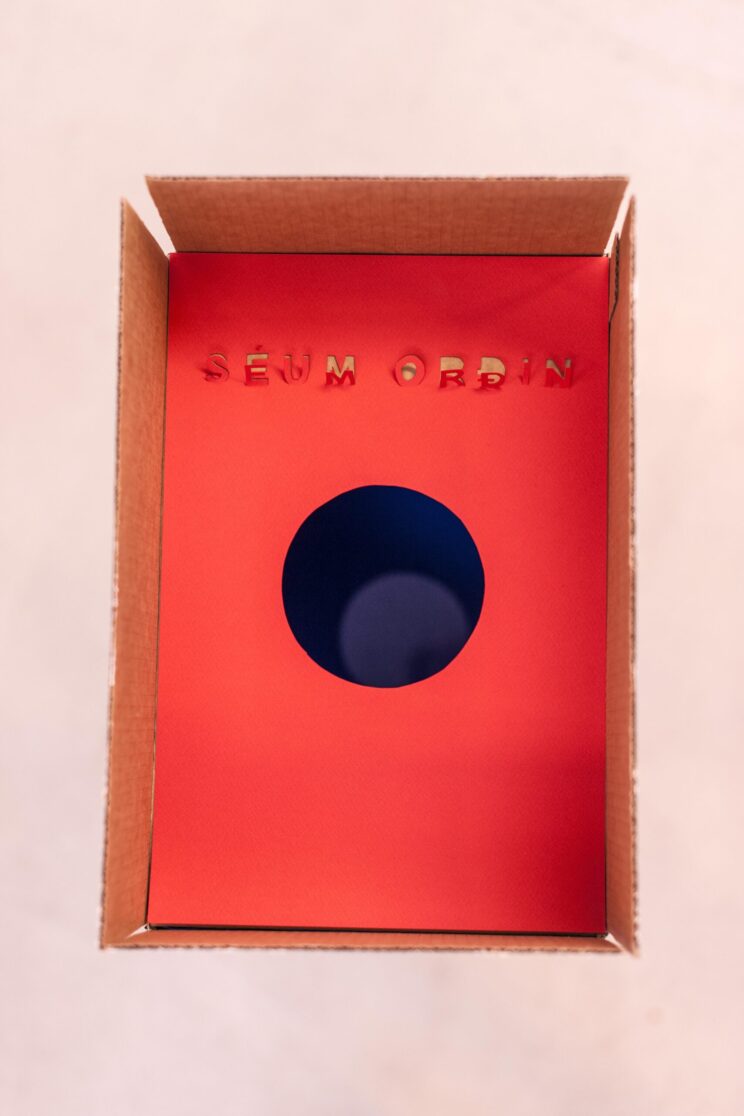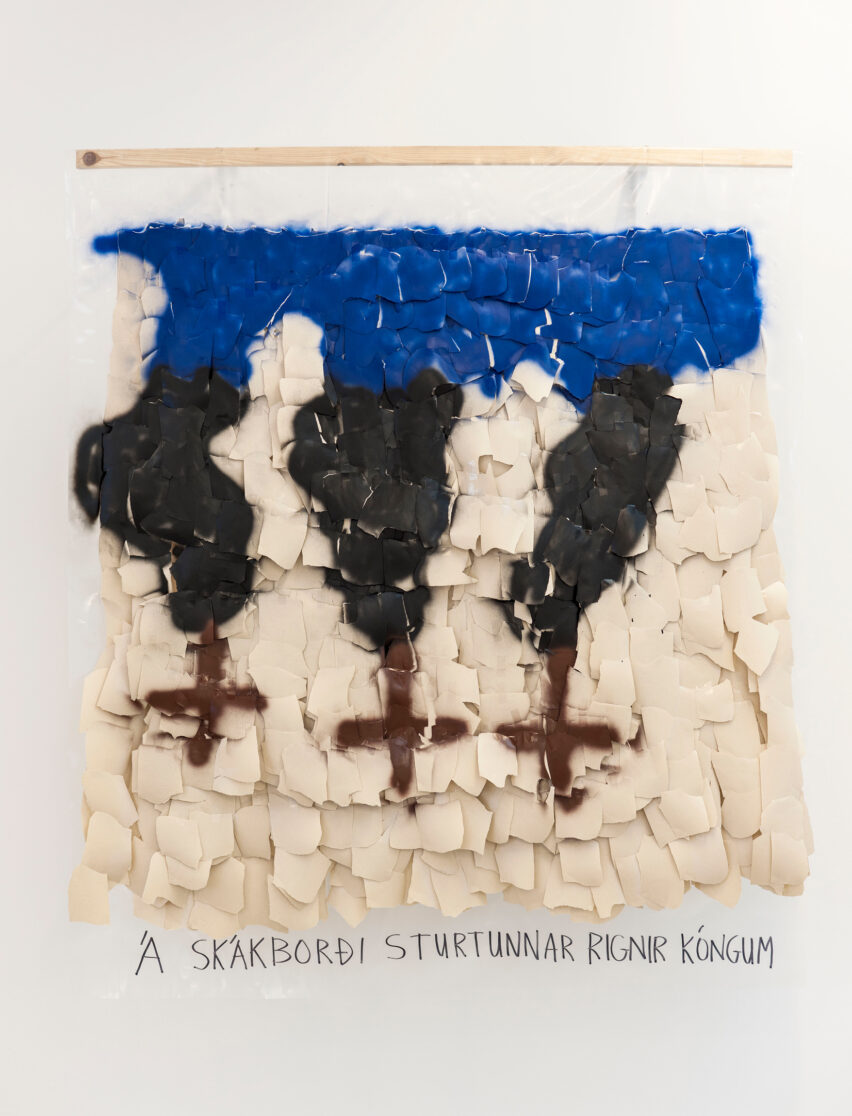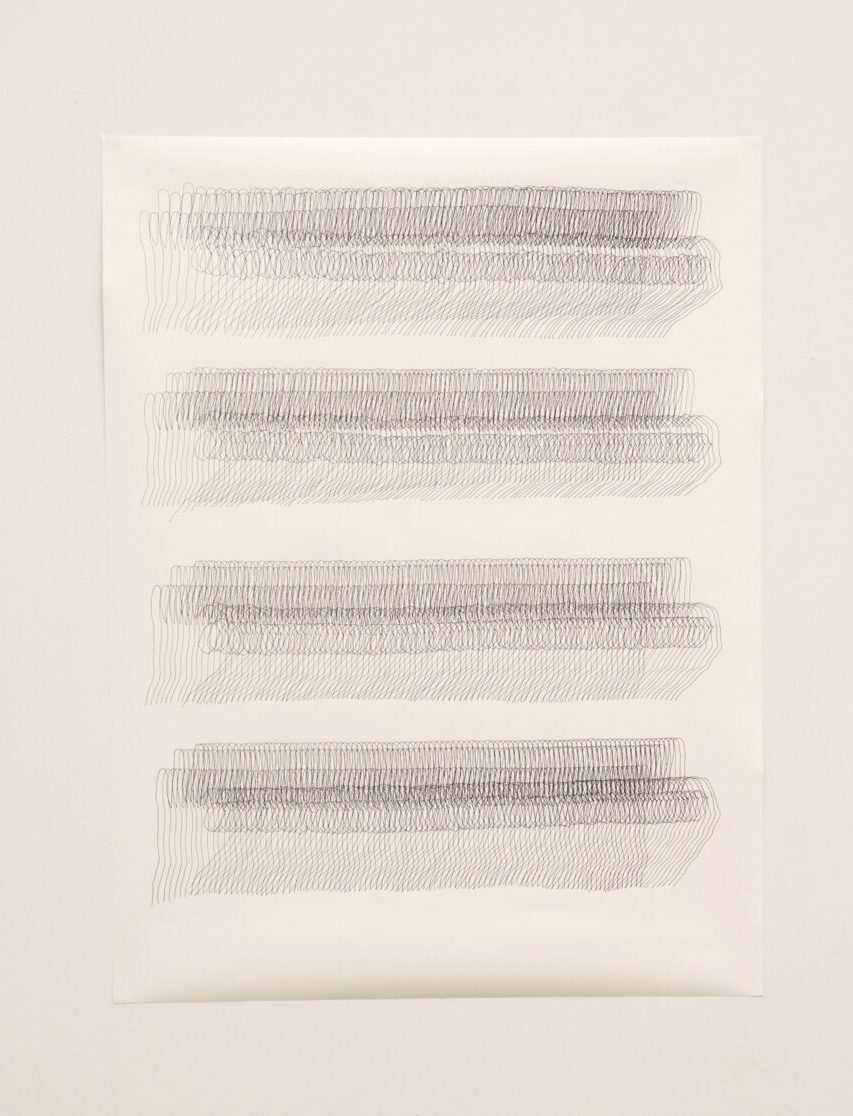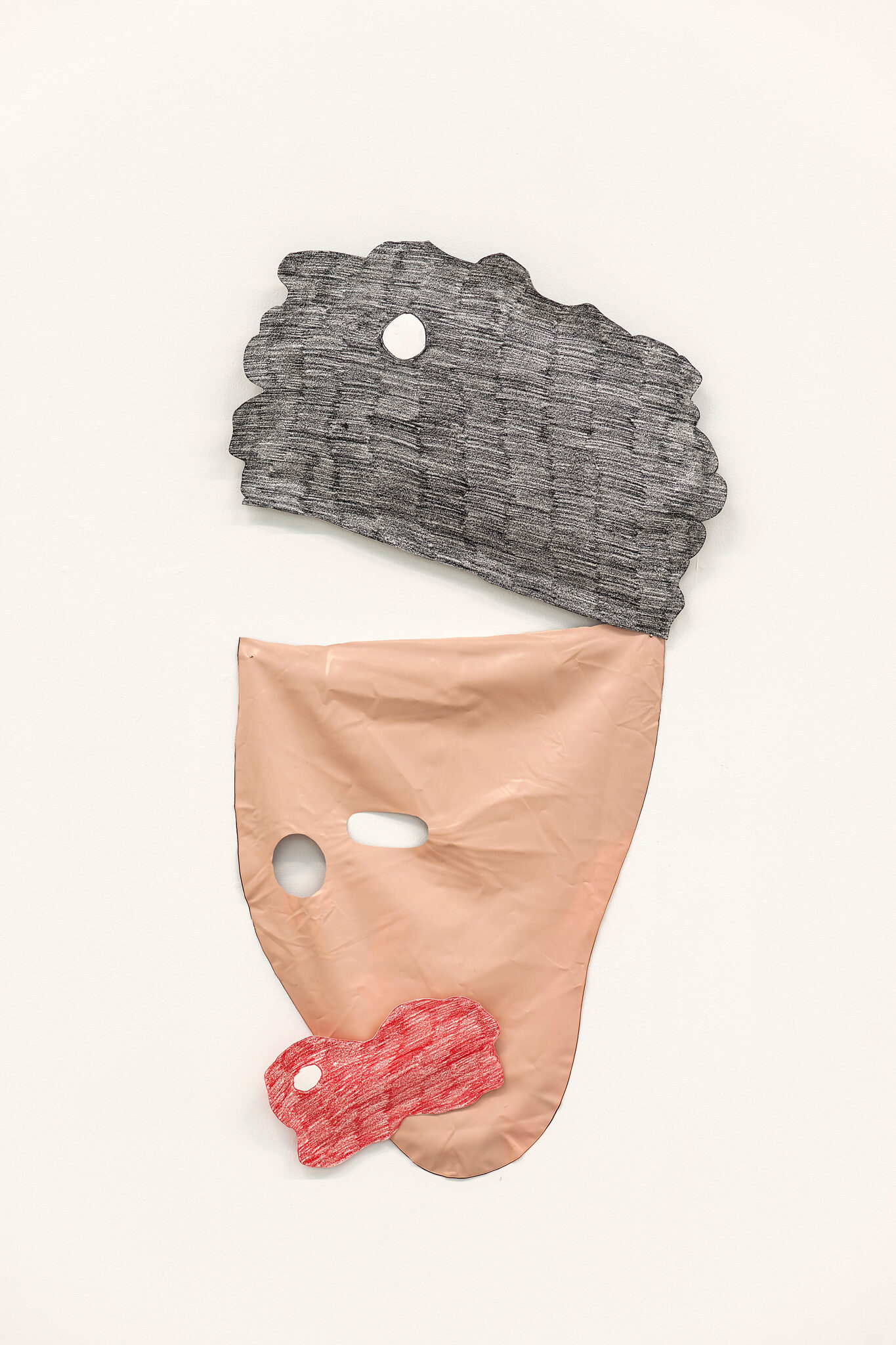THRESHOLD
Eygló Harðardóttir , Jóna Hlíf Halldórsdóttir, Karlotta Blöndal , Ólöf Helga Helgadóttir
October 24, 2015 – February 21, 2016
Works in Paper Mark the Threshold
Becky Forsythe
The paper is like a person: variable arid, flexible,
fragile, forgettable, beautiful, soft, serving, empty,
offering, giving, listening, broken, bent, dried out,
worn, importunate but inquisitive.
Sheets (2015) Jóna Hlíf Halldórsdóttir
Threshold brings together works in paper by artists Eygló Harðardóttir, Jóna Hlíf Halldórsdóttir, Karlotta Blöndal and Ólöf Helga Helgadóttir. What transcends from this group is a dialogue on paper beyond the two-dimensional plane. Subtle moments within the exhibition bring us back to where paper begins as a tree in the forest, but what also underlies is a reminder that the material is manufactured, is part of our everyday, and recycled as a memento of contemporary culture. Throughout, the material is transformed from one state into another: always on the way to becoming something else.
For Eygló, Jóna Hlíf, Karlotta and Ólöf Helga paper becomes a passageway to manipulating surface, technique, possibility and response through sets of actions. Commentary on community, the surrounding environment, spectrums of colour and assemblage emerge as cut-outs on fields of colour; arise in large stiff panels stained with the residue of wet pigment, share qualities with crispy starched fabric; becomes calculated folds of textured pattern and blocks of colour; and accumulate in mass collections that skew perceptions. The viewer is invited to read form as it moves from two-dimensions to three and although it is easy to link the works through the shared choice to use paper, that interpretation only limits its potential. Threshold investigates paper as a flexible structure and changing material, while also conveying an innate vulnerability present in the medium. There is a seriousness found in many of the works exhibited, but also a light sense of play. If we consider them as a whole, it is clear that they are constrained by their own surface nature as two- dimensional, while at the same moment tinkering on the brink of departure as three-dimensional constructions.
The threshold is a term used to mark a change in circumstance. On one hand it resembles a passageway or beginning point, on the other the term acknowledges a point of limit. In both cases there is a certain arrangement of change. This idea can be seen in medicine, science and research, as a marker for pain, or a structure within the built environment. During the spring thaw a stream reaches its capacity and flooding waters mark the threshold. Being on the threshold of womanhood elicits a moment where something happens, evokes a sense of departure or transition, the excitement of something new recalls the same. But what if we consider the threshold of paper; its ability to change through being manipulated, the point at which it is no longer recognizable, loses its integrity, or becomes something else? In these thoughts there is an indication that paper is malleable, and tolerates change.
In Gathering II (2015) Karlotta Blöndal explores the relationship between paper and pigment, both of which are deliberately chosen. Large scrolls of paper become the surface for a number of experiments in the way that pigment reacts to a series of drying processes.
Separate gestures connect to create multiple surfaces. The large fields of patterned colour are presented like flags and convey a relationship to human skin: the layered surfaces not unlike an interior body. In one series organic forms recall the piling up of intestinal flesh, another framed work resembles a set of lungs. For Karlotta paper is a living material, reacting to specific gestures, with character that informs both the content and formal aspects of a completed work. Gathering II contains a sense of transparency and reflection as a response to being stained by the artist. The process maps a set of wet ‘islands’ of colour as they dry with subtle borders that meet to create an entire unified whole.
While most of the works by Karlotta included are new, they are not unrelated to a body engaged with field investigations in certain environments and locations, impermanence and change, or the individual’s role alongside these considerations. They range in scale, and the larger works become playful curtains in the gallery space. The viewer is invited into experience them and in an aesthetic encounter elements resonate from the paper surface and consume some of the viewing space. In the presentation there is also reference to the material as wood, which hints to the lifespan or full circle of it. As wall hangings the works recall tapestries, but in contrast the paper is stiffened with texture from the drying process. Here it is clear that through the gestures of soaking the paper and allowing it to dry, the endurance of the material is brought into question and pushed to specific transformative boundaries.
Eygló Harðardóttir makes visual experiments in colour composition with paper as an important building material in the equation. Her work possesses a direct connection between artist and material, and one in which paper becomes a means to experience change through controlled actions such as cutting, folding, tearing and bending. The inner qualities of paper are also considered; it’s sensitivity to environment, acidity, transparency, colour and texture, but also the means to convey certain energy. In cases, such as Lótus (2015) or Tamil Nadu (2013) paper becomes a method to interpret three-dimensional space, but also enters into that dimensional space. Colour becomes an important component in this consideration. As indicated by other works, Ultramarine (2013) and Indigo (2013), there is also a reference to the potential of pure colour to reflect space. How we read and approach colour is equal to the way we read the structures as their paper surface. The careful selection of paper and raw paint is a complex process although to the viewer it can appear as playful sculptures. Multiple planes inform and converse with the surrounding environment, and unlock a dialogue with the imagination.
There is a lightheartedness attached to Eygló’s method and her works come across as floating entities, both serious and open. They speak to each other from across the space and there is a sense of curiosity and freedom within them. Each portrays an individual personality and consumes its own space: in other words, the works speak for themselves. The senses are opened as the structures transcend the unframed spaces surrounding them and the artist’s apparent touch can be considered a reflection of the moment of process.
A colour from one action may make its way into the field of another, and a moment in the studio is marked within the experience of the work as a reminder of the changing nature in the development of one thing from another.
Paper is personified with qualities of sensitivity and character, flexibility and response in the work of Jóna Hlíf Halldórsdóttir. Her use of text and the composition of phrases are key components in Jóna Hlíf’s approach to creating, where wordplay and construction hold equal weight in the reading of the works. Texts are an evident process through which Jóna begins to draw with paper and this thread continues through an assortment of manipulations with paper. Words such as transparency, resolution, community hint to a sort of political system or framework questioned but also longed for by the artist. The works are delicate and minimal, while it is also clear that the process involved in their creation is complex, intricate and concise.
There is a strange commitment to the phrases and words: a transformation from thought to physical text, from two-dimension to three. The artist in a sense commits thoughts to paper and a movement through contemplation, spoken word, pencil lines on paper, cut- out spaces upon flat surfaces become a commitment to the material and there is no turning back. The letters become permanent solid representations, and the physical construction of phrases a way of drawing with paper and cutting out with feeling. The delicate spaces and surfaces found within Jóna Hlíf’s text-based works are also translated in the Sheets (2015) series, where colour and shape work alongside the fragile and yet flexible moving nature of paper. In the larger context, paper becomes a means to reflect upon us.
Ólöf Helga’s works are reminders of the playfulness and sometimes absurdity of everyday materials and objects. Within the works included in Threshold boundaries are pushed, and the use of paper is questioned. While Ólöf approaches paper in some cases as a found material, where collecting and stockpiling are initial steps in the context of re-assembling the material, everyday materials are pushed outside of their common role. In some cases function or use is challenged and paper becomes a mean to investigate contemporary culture. Repetition, experimentation with constructing new forms from old, and the tangibility of the material enlighten Ólöf Helga’s process. Newspapers and protective paper wrapping are transformed to function within and push the framework of existing spaces, build layers, experiment with two and three dimensional spaces and to accumulate different surfaces. Oversized plastic chain links stuffed with the daily news become humorous representations of the actual reference, while the same can be said about the large panel The Shower (2015). In another way Ólöf Helga drives the potential of the medium as in Untitled (2015) where paper has been glued together in layers to create a structure whose strength is multiplied through the process, and much more so than as a single sheet of the paper. The form becomes so stiff that it cannot fit within the flexibility of the bike tire frame. Humor runs through all of the works, and even so as repeated traces of the artist’s left hand in the ‘ok’ hand gesture in The Right Hand (2015) overwhelm the viewer in their calculation. The continual lines of the drawing are playfully complex and time- consuming in their execution, but work to misinform the reading of the work. What is apparent is that for Ólöf Helga paper is mutually a tool and a platform, both monotonously repetitive and also full of surprise.
Threshold highlights paper as it is pushed in all directions, used as a surface for exploring line and repetition, for movements from wet paint to dry solid material, where words cut into flat surfaces suddenly become fastened in the world beyond thoughts, and where colour, touch, and humor can push our perceptions beyond two-dimensions. The life of the paper allows it to be transformed and manipulated to a point that it becomes a mere resemblance of its former self, and in that movement both delicate and bold gestures hint to a new understanding. Eygló Harðardóttir, Jóna Hlíf Halldórsdóttir, Karlotta Blöndal and Ólöf Helga Helgadóttir open up the possibilities within both creating with and perceiving ‘works in paper’. In all cases, paper is chosen according to a certain value or characteristic. Particular types carry a history, can be charged with specific meaning or contain a response that is crucial to the artist’s investigation itself. The choice is often deliberate and informed. Where the movement of process informs the way that we experience the content of these works, the medium also plays a crucial role. In a constant flux between method and potential we are invited to perceive the adaptable nature of paper, but also its restraints. What is clear about the works of the four artists included in this exhibition is a relationship to paper itself, as a means to measure potential, enter into something new and mark the threshold.
Becky Forsythe is an independent visual arts professional, writer, curator and Collection Manager at the Living Art Museum. She received a BFA in Visual Art from York University in Toronto, an MA from the University of Manitoba in Winnipeg and a Graduate Certificate in Museum and Gallery Studies from Georgian College. Becky currently lives and works in Reykjavík, Iceland.
Curator: Inga Jónsdóttir
Artists
Eygló Harðardóttir
Eygló (1964) graduated from the Icelandic College of Arts and Crafts and AKI – Akademie voor Beeldende Kunst in Enschede in the Netherlands in 1990. In 2005 she completed her B.Ed. from the University of Iceland and in 2014 she received an MA degree in Art Education from the Iceland Academy of Arts. Alongside being recognized artist Eygló has taught both at the Iceland Academy of Art and the Reykjavik School of Visual Arts intermittently. Eygló has lived and exhibited in Iceland and abroad and her works are in several museum collections.
Jóna Hlíf Halldórsdóttir
Jóna Hlíf (1978) graduated from the Akureyri School of Visual Arts in 2005, completed her MFA degree at the Glasgow School of Art in Scotland in 2007, and received an MA degree in Art Education from the Iceland Academy of Arts in 2012. Alongside working as an artist Jóna Hlíf now holds the position of Chair of the Association of Icelandic Artists and is a part-time teacher at the Iceland Academy of Arts and the Akureyri School of Visual Arts. Jóna Hlíf has lived and exhibited in Iceland and abroad and her works are found in public collections.
Karlotta J. Blöndal
Karlotta (1973) graduated from the Icelandic College of Arts and Crafts in 1997. She continued her studies in Holland and Sweden and received her MFA degree from the Malmö Art Academy in 2002. Beside her art practice she has participated in, edited, and initiated art publications such as the art magazine Sjónauki. Karlotta has been part of numerous artist-run initiatives in Iceland and Sweden and has worked as a part-time teacher at the Reykjavik School of Visual Arts. Blöndal has exhibited extensively both in Iceland and abroad in Scandinavia, Germany and S-Korea.
Ólöf Helga Helgadóttir
Ólöf Helga (1972) studied at the Icelandic Film School in 2001 and then the Iceland Academy of Arts where she received her BA degree in Fine Art in 2005. She then went on to study at Slade School of Fine Art in London, where she completed her MFA degree in 2010. Since then, Ólöf Helga has been active as an artist, participated in numerous exhibitions in Iceland and abroad and is preparing for an upcoming solo exhibition in Malmö Sweden.


